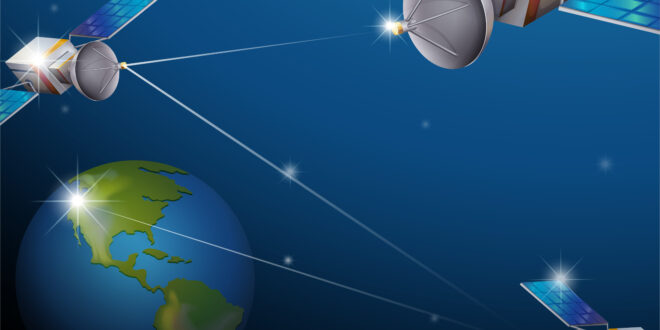In today’s digital age, access to the internet is as essential as access to clean water or electricity. Whether it’s for communication, education, entertainment, or business, being connected to the world wide web has become a fundamental necessity. While urban and suburban areas are well-covered by traditional broadband services like fiber optic, cable, or DSL, there are still many regions—particularly in remote and rural areas—where such connectivity options are not available. This is where satellite broadband service comes into play.
What is Satellite Broadband Service?
Satellite broadband service is a type of internet connection that utilizes satellite technology to provide high-speed internet access. Unlike traditional broadband services that rely on ground-based infrastructures like cables or fiber optics, satellite internet works by using communication satellites orbiting the Earth to send and receive data.
To access satellite broadband, users need a satellite dish installed at their location. This dish communicates with satellites in space, which then relay information back and forth to ground stations and, finally, to the internet. The system effectively bridges the gap for users in regions where other forms of broadband might be impractical or impossible.
How Does Satellite Broadband Work?
The basic working principle of satellite broadband involves a three-part system:
- Satellite in Orbit: There are geostationary satellites that remain in a fixed position above the Earth. These satellites are responsible for sending and receiving signals to and from users on the ground. Some newer services are employing constellations of low-Earth orbit (LEO) satellites, which orbit closer to the Earth and can offer lower latency.
- Ground Stations: These stations are located on Earth and act as intermediaries between the satellites and the internet. They transmit data to the satellites, which then relay the signals to users’ satellite dishes.
- User Equipment: To access satellite broadband, users need a satellite dish and a modem. The dish receives signals from the satellite, and the modem converts them into usable internet data for devices like computers, smartphones, and tablets.
Advantages of Satellite Broadband
Satellite broadband service offers several advantages, especially in areas where other forms of internet access are unavailable:
1. Wide Coverage
Satellite broadband has a major advantage in terms of coverage. Unlike cable or fiber, which requires extensive infrastructure and is difficult to deploy in rural or remote locations, satellite broadband can provide coverage virtually anywhere on the planet. This makes it an ideal option for people living in underserved areas, such as remote villages, islands, or mountainous regions.
2. Reliable Connectivity
While weather conditions can occasionally interfere with satellite signals, modern systems are more robust and less affected by environmental factors. In areas prone to natural disasters or those with unreliable terrestrial infrastructure, satellite broadband often remains operational when other systems fail.
3. Quick Deployment
Setting up satellite broadband is relatively quick and easy compared to laying down fiber optic cables or constructing other internet infrastructure. Once the equipment is installed—typically consisting of a satellite dish and a modem—users can immediately connect to the internet. This ease of deployment makes satellite broadband a go-to option in emergency situations or in areas where there is an urgent need for connectivity.
4. Independence from Ground Infrastructure
Because satellite broadband does not rely on ground-based cables or wires, it is less vulnerable to damage or wear caused by environmental factors like floods, earthquakes, or road construction. This resilience makes it a dependable choice for users in areas where traditional infrastructure is difficult to maintain.
5. Mobile Connectivity
Some satellite broadband services are portable, meaning that users can take their connection with them when traveling to remote areas. This is particularly useful for industries such as maritime, aviation, and tourism, where constant connectivity in remote regions is a must.
Challenges of Satellite Broadband
Despite its many benefits, satellite broadband service does come with a few challenges and limitations:
1. Latency
Latency refers to the time it takes for data to travel from the user’s device to the satellite and back to Earth. In traditional geostationary satellite broadband systems, latency can be relatively high due to the large distances between the Earth and the satellite. This can cause noticeable delays in certain types of online activities, such as video calls or gaming, which require real-time interactions.
However, with the development of low-Earth orbit satellites, latency is being significantly reduced. LEO satellites orbit much closer to Earth, allowing for faster data transmission and lower latency, which could eventually make satellite broadband more competitive with traditional broadband services in this regard.
2. Weather Sensitivity
While modern satellite technology is quite resilient, extreme weather conditions like heavy rain, snow, or thunderstorms can occasionally disrupt the signal. This phenomenon is known as “rain fade,” and while it usually only causes temporary slowdowns or outages, it can be a concern in regions with frequent severe weather.
3. Data Caps and Speeds
Many satellite broadband plans come with data limits, meaning that after a certain amount of data usage, the service may slow down or impose additional charges. Speeds can also vary depending on network congestion and the user’s location. Although speeds have been improving with newer technologies, satellite broadband has traditionally been slower than fiber or cable connections.
4. Cost
Satellite broadband equipment, such as the satellite dish and modem, can be more expensive upfront than traditional broadband installations. Additionally, monthly service costs for satellite broadband can be higher due to the sophisticated technology involved and the costs of maintaining satellites in orbit.
Who Benefits the Most from Satellite Broadband?
Given its strengths and limitations, satellite broadband service is especially beneficial for certain groups of people and industries:
- Rural and Remote Residents: People living in rural, remote, or geographically isolated areas benefit the most from satellite broadband, as it often represents their only viable option for high-speed internet access.
- Emergency Services: In the aftermath of natural disasters or other emergencies, satellite broadband can quickly provide critical communication links when ground-based networks are down or destroyed.
- Maritime and Aviation Industries: Ships, airplanes, and offshore platforms require reliable connectivity while in transit, and satellite broadband delivers that by providing access even in the middle of oceans or other hard-to-reach areas.
- Government and Military: Military operations, humanitarian efforts, and government agencies frequently use satellite broadband for secure communications in remote or war-torn areas where terrestrial networks might not be reliable.
- Researchers and Adventurers: Scientists conducting research in the polar regions, deserts, or other extreme environments rely on satellite broadband to stay connected and share their findings with the rest of the world.
The Future of Satellite Broadband
The future of satellite broadband looks promising, thanks to advancements in satellite technology. One of the most significant innovations is the deployment of low-Earth orbit satellite constellations, which aim to provide faster internet speeds with lower latency compared to traditional geostationary satellites. LEO satellites orbit much closer to the Earth, significantly reducing the time it takes for data to travel, making online experiences smoother and more efficient.
As more LEO satellites are launched and technologies improve, the potential for satellite broadband service to compete with or even surpass terrestrial broadband in some areas becomes more realistic. This could lead to more affordable services, faster speeds, and greater global coverage.
Furthermore, as global demand for internet access grows, satellite broadband will likely play an increasingly vital role in bridging the digital divide—ensuring that even the most remote corners of the Earth can stay connected.
Conclusion
Satellite broadband service has revolutionized the way we think about internet connectivity, especially for those living in areas where traditional broadband options are unavailable. With the ability to deliver internet access to virtually any location on Earth, it serves as a lifeline for rural residents, emergency responders, researchers, and industries that operate in remote regions.
 Personal Finance and Attractive Interest Rates Unlock Smart Savings with Low Rates and Expert Financial Tips
Personal Finance and Attractive Interest Rates Unlock Smart Savings with Low Rates and Expert Financial Tips







